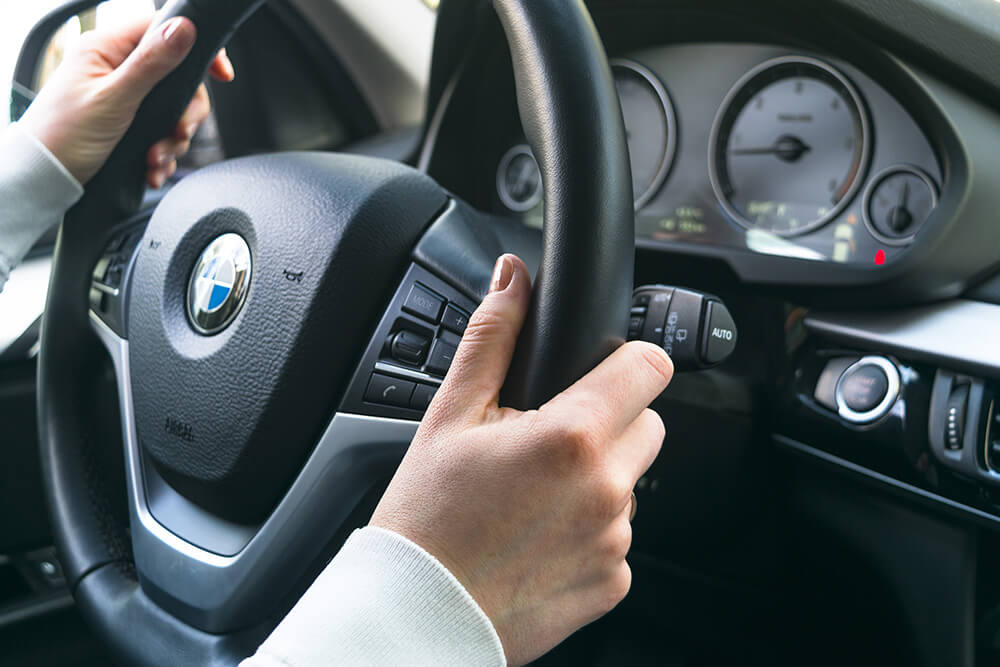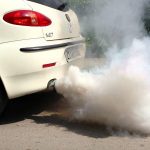
Today’s article will focus on some common car engine problems and solutions. The core of any working vehicle is the engine. There is nothing more infuriating than a car engine plagued with problems. Although not all engine problems can result rapidly into engine breakdowns, proper care and scheduled servicing are crucial to avoid worst-case scenarios, such as engine replacement. With timely maintenance, you can protect your engine from numerous issues and reduce the possibility of mechanical failures. Today’s article will focus on some common car engine problems and solutions.
It’s important that you know these problems and their severity to avoid expensive garage bills that arise from maintenance. However, diagnosing and fixing these problems may be difficult. But, this article will expand your knowledge base about the common engine complications you should look out for, with their possible solutions.
Read also: Toyota Dashboard Symbols & Meaning
- The engine refuses to crank.
The feeling of starting a car without the engine igniting can be nerve-racking, but it is normal as almost every driver experiences this on several occasions. If you encounter this, think of a battery issue first if the engine is clacking but not cranking, or an ignition or fuel problem if there is a crank, but no start. There are different situations why your car engine may not start, which include:
- The fuel filters are clogged.
- A damaged wire or faulty alternator in the ignition system can affect the engine.
- Corroded or wrongly coupled battery terminals.
- Dirty fuel injection nozzles.
- The ignition switch is severed.
- Air bubbles or fuel pump malfunctioning in the injection system.
- The starter motor failure.
Solution.
To solve this problem, you should address specific vehicle parts, particularly the ignition, battery, and fuel delivery. Narrow down the likely issues by attempting these solutions:
- The battery: start by inspecting the battery. Start the vehicle and listen to the sound; diagnose a dead battery if none is heard. If otherwise, scrutinize the battery’s terminals to ensure they are debris-free and ascertain if all the cables are correctly connected. Once you have checked the wires, test the battery’s voltage with a voltmeter, and restart the vehicle. If all the cables are intact and the engine still won’t start, try to jump-start the vehicle or use a test light to test the starter-solenoid. And if the solenoid doesn’t engage, then it needs to be replaced.
- Fuel delivery: if the battery is fine and the engine won’t crank, the next thing is to check the engine’s fuel distribution. First, do a refill if your vehicle is out of gas and start the engine. Look for jerking signs as you go. If the RPMs climbs or drops, this may indicate a transmission or fuel problem. Next, monitor the engine for stalling as you drive. If it starts and stops, give it sometime, then restart it. The engine should be powered up at this stage, but if not, change the fuel filter and test the fuel pump. All these should help if this engine problem is linked to the fuel delivery.
- Ignition: the last alternative is to test the ignition compartment. Inspect the spark plugs for any damage signs. If the spark plugs appear black or spoilt, find the issue that made them damaged to prevent future complications, and buy new ones afterwards. The next thing is to make sure the plug wires are fastened to the ignition coil and spark plug. Examine each ignition coil for any blue spark to determine if the coil is working effectively.
- Over-heating
Your temperature light activates when your engine is overheating, followed by foul smell coming from the air vents into the passenger area. These signs may be due to several reasons, including the breakdown of the cooling system. If the coolant is the root of the problem, refill the coolant reservoir below the car bonnet. Other possible causes of engine over-heating are as follows:
- Damaged radiator.
- Thermostat valve breakdown.
- A faulty radiator cap.
- Split or kinked radiator hoses.
- Car cooling system malfunction.
- Faulty cooling fan.
- Coolant reduction.
Solution.
Do these things if your engine is overheating:
- Switch on the heater to transfer the excess heat into the car from the engine.
- Put off the air conditioner to reduce the load on your engine.
- Stop your car immediately and open the bonnet to let air circulate and remove the heat.
- Set your car to park or neutral and ignite the engine to allow more water and air to pass through the car radiator by making the water pump work speedily.
- Clogged fuel filter
A clogged oil filter obstructs the fuel supply and might cause terrible fuel pump and engine problems. Fuel filters shield the engine and stop dirt from penetrating the fuel injection system. If the filters are blocked, it will obstruct fuel distribution, the engine will stall, and the following problems will arise:
- Inconsistent and unstable power delivery.
- The engine is failing to revolve.
- Fluctuating power undergoing acceleration.
- Engine cut-outs and misfires.
- The engine is inactive to ignite.
- The engine sounds bumpy while stagnant.
Solution.
The only solution to a blocked fuel filter is to replace them with new quality filters recommended by the car manufacturer.
- Fuel pump malfunction
Fuel pumping into the combustion system is solely responsible for both the engine and power transfer’s efficiency and effectiveness. A fuel pump discharges fuel into the ignition system. Hence, it increases the power delivery and boosts the engine’s efficiency simultaneously. If the fuel-delivery system stops delivering fuel properly, it will affect the functioning of the engine. Many reasons can cause a fuel pump to fail; they include:
- The pressure and power suddenly surge.
- The engine keeps rolling but not starting.
- Fuel consumption rapidly increases.
- Temperature rise.
- A choked engine.
Solution.
To prevent constant failure of your fuel pump, follow these simple routines.
- Refill your gas tank when it is halfway or empty.
- Pay attention to the gauge fuel-pressure.
- Monitor startup issues; while you turn the key, listen to your engine.
- Be mindful of engine sputtering.
- Defective Ignition switch
Sometimes, a vehicle fails to start because of a broken ignition switch. Turn the keys in the ignition and investigate further if your car refuses to start. The ignition switch works in different phases; either the electrics come on, and the dashboard starts or the ignition switch actuates the fuel injection and the ignition system power, so you can start the engine by turning the key one last time. Any issue with the ignition switch can lead to different problems from sudden power shutdown to engine halt. You may notice these issues if the ignition system is faulty.
- Your car starts, but the engine stops.
- The vehicle engine stalls while driving.
- The lights on the dashboard continually flash when you turn the key.
- Many vehicle parts stop functioning correctly.
Solution.
After verifying that all the electrical parts are working correctly, such as the circuits, fuses, and relays, change the ignition switch.
- Greasy fuel injectors.
The fuel injectors are a very vital quality component in the fuel injection compartment. They work internally in the combustion area and pass the fuel in a thin and foam structure. For better performance, it is essential to maintain clean fuel injectors for improved carbon emissions quality. Here are some signs of soiled fuel injectors you must pay attention to:
- Engine jerking.
- Engine halts suddenly.
- Loss of power.
- Fuel consumption overly increases.
Solution.
If you experience any of these problems, clean the fuel injectors for increased performance and better a mixture economy.
Read also: Common engine problems
- Faulty Alternator
A dead car battery is a minor issue compared to a dead alternator that produces current and powers the battery. A defective alternator can damage your car battery, the whole electric wiring, or the connection of your vehicle. When the alternator becomes faulty, it flattens the battery life by continually recharging the battery. These are vital signs that hint at a defective alternator.
- You are alwaysjump-starting your car.
- Low and fluttering lights.
- Faulty battery.
- The warning light of the battery appears.
Solution.
Replace the alternator with a new one if you detect any issues. But first, ascertain the estimated quote to replace the alternator by checking its voltage at a repair shop; and fixing it yourself to reduce expenses. To reset a faulty alternator, disengage the battery, take out the serpentine-belt, remove the alternator, and disconnect the wiring connection to unbolt it, then reverse this process to reconnect it.
Other possible common engine problems include an unusual rattling sound, engine smoking, and a defective starter motor, which may interchangeably affect your vehicle’s smooth running.
Conclusion
Although proper maintenance and regular checks, such as servicing and constant oil refilling, are essential, engine problems always develop after a while regardless of your car model. Therefore, if you discover any likely engine fault, it is crucial to handle it on time before it worsens and damages your car engine completely.
Yes, the constant maintenance might be expensive, but it is vital to keep your car running and in perfect working condition. So, keep up with your vehicle’s maintenance to get the most out of it.
Hope you enjoyed reading our article on common car engine problems and solutions. If your car develops an engine problem, we advise that you call a car mechanic immediately before it damages the entire engine.









